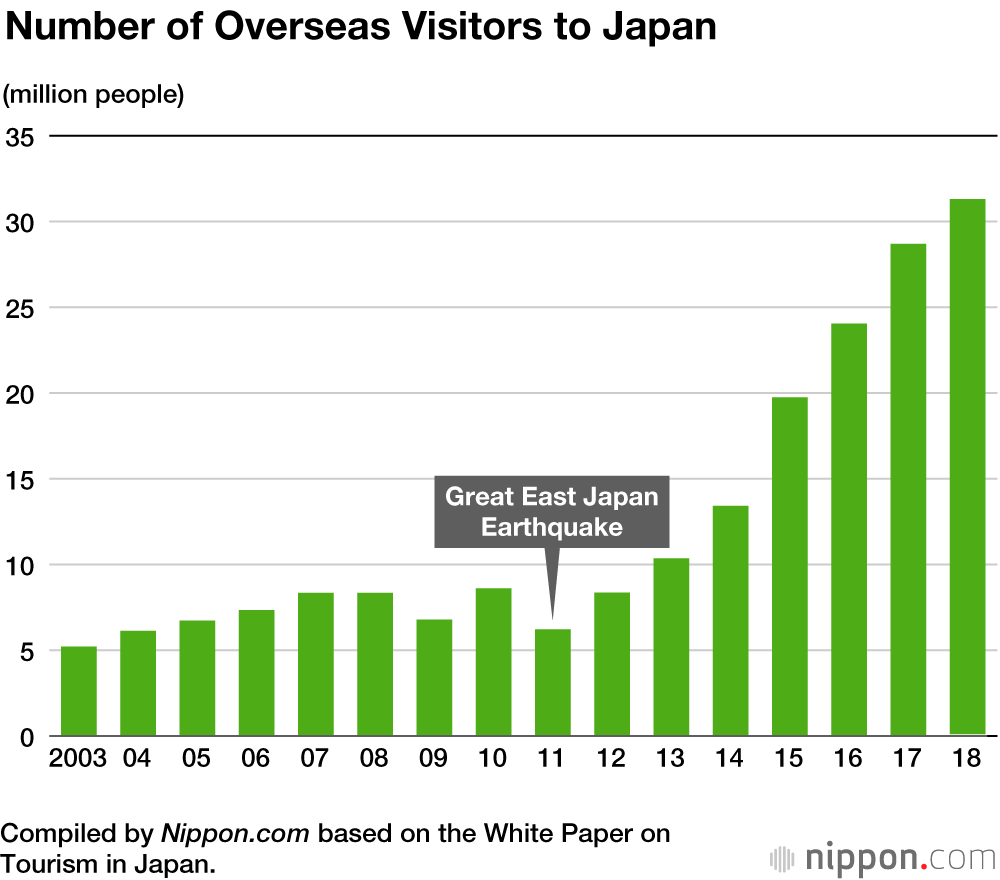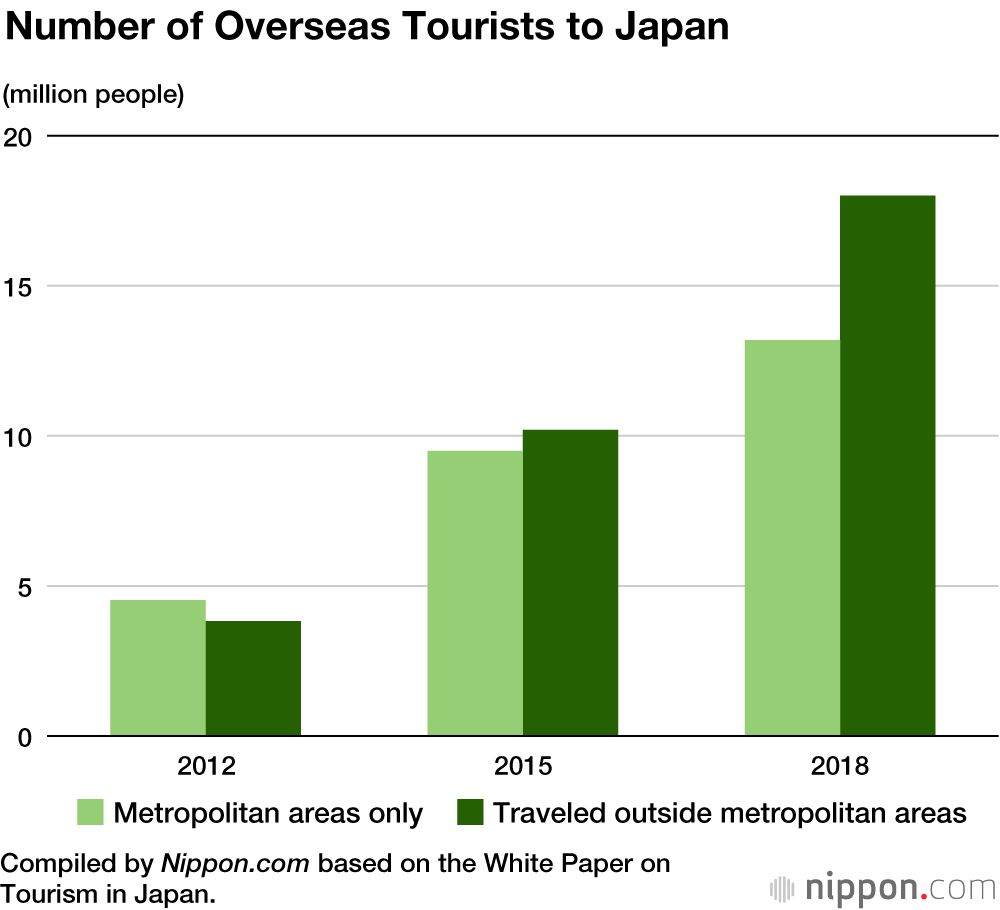
Overseas Visitors Spending More Time and Money Outside Japan’s Big Cities
Economy- English
- 日本語
- 简体字
- 繁體字
- Français
- Español
- العربية
- Русский
Japan welcomed 31.2 million overseas tourists in 2018, the first time this figure has risen over 30 million. It is steadily approaching 40 million, the goal set for 2020, the year of the Tokyo Olympics. Visitors from Asia increased 8.3% from the previous year to 26.4 million, and accounted for 84.5% of the total. The increase in flights from countries like South Korea and Thailand is thought to have stimulated demand.
International tourists are increasingly venturing beyond the major cities. In 2018, 18 million overseas visitors traveled outside the three main metropolitan areas of Tokyo, Nagoya, and Osaka (encompassing eight prefectures: Tokyo, Kanagawa, Chiba, Saitama, Aichi, Osaka, Kyoto, and Hyōgo).
In 2012, 54% of overseas visitors stayed only in metropolitan areas, but by 2015 this figure had dropped to 48.2%, with more than half visiting regional Japan. In 2018, the ratio of overseas visitors going to regional areas rose again to 57.7%, boosting visitor spending in those parts of the country from ¥656.1 billion in 2015 to just over ¥1 trillion in 2018.
The growing demand for experiences on offer in Japan’s regions, such as skiing, snowboarding, hot springs, nature tours, golf, and marine sports, is thought to be behind the increase.
The white paper draws attention to the increased popularity of stays at temple lodgings on Mount Kōya in Wakayama Prefecture, an important Buddhist site. In the five years since 2013 the number of people staying there has risen more than fivefold. The Ise-Shima area in Mie Prefecture boasts the Ise Grand Shrine that attracts more than 100,000 visitors annually. It is aiming to attract overseas tourists by offering experience tours such as to huts used by ama, female shellfish divers.
Overseas tourist spending on entertainment also nearly doubled from 21.5% in 2012 to 40.9% in 2018, indicating a significant shift from consumption of material goods to experiences.
(Translated from Japanese. Banner photo © Pixta.)

